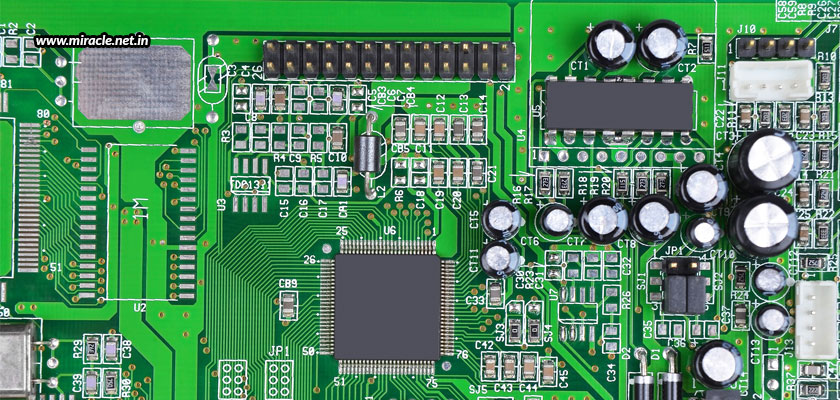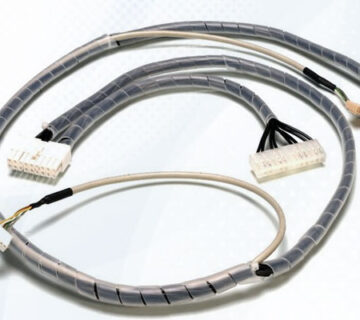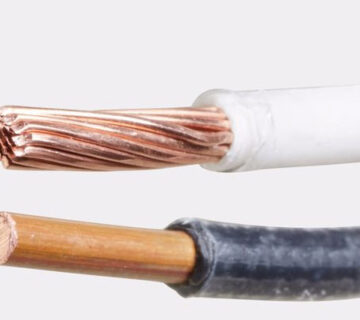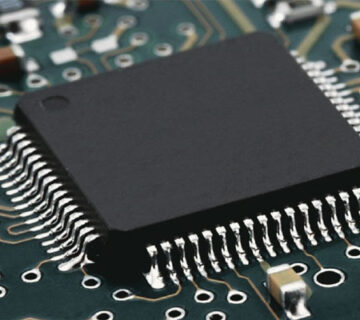One of the key components in electronics is the Printed Circuit Board or PCB, which was once constructed through a labourious process of point-to-point wiring. This process led to frequent failures at wire junctions and short circuits when wire insulation began to age or crack. But, as technology advanced, these PCBs started being constructed with a small gauge wire being wrapped around a post at each connection point, creating a gas-tight highly-durable connection.
PCBs have lines and pads that connect various points like connectors and components. These connections enable signals and power to be routed between physical devices. Soldering the metal makes these electrical connections between the surface of the PCB and electronic components. These components are soldered to both electrically connect and mechanically fasten them to the PCB.
PCBs can be single-sided, double-sided, or multi-layered. More the number of layers, higher the component density, and more difficult the repair and field modification of circuits. But, in spite of this, there is rising popularity of PCBs with 4 or more layers. Considering multi-layered PCB to be a sort of layer cake, there are layers of different materials laminated together with heat and adhesive that results into a single film. The general layer composition is a substrate being sandwiched between two layers of copper, which in turn is sandwiched between layers of soldermask; and the entire film is top-coated with a layer of silkscreen.
Laying out the circuit requires quite some designing effort, but manufacturing and assembly can be automated. Specialized CAD software is available to do much of the work. Efficient and productive PCB assembly from India can encourage mass-production of PCBs with a single layout, and multiple fabrications being done at the same time.
Surface Mount PCB Assembly
Surface Mount Assemblies are the most popular as they don’t require drilling, and are mechanically less stressful than other kinds of assemblies. Moreover, it involves a faster and lower cost manufacturing process that produces component-rich designs, and allows for more connections per component. However, the repairing in these kinds of assemblies is comparatively difficult and the components involved are not as high-powered with high voltages.
Through Hole PCB Assembly
Through Hole Assembly provides stronger mechanical bonds than any other assembly, which is why it is optimal for connectors, capacitors, transformers, and other heftier circuit board components. These assemblies are most popularly used in military and aerospace applications. However, it is a time-consuming installation process as it requires drilling to be done, which also makes it more expensive. Moreover, this kind of mounting often requires hand-soldering, which is comparatively lesser reliable than other assembly types.
Surface Mounting & Through Hole PCB Assembly Combined
The combination of both surface mount and through hole methodologies is used for complex boards. In this procedure, the surface mounting is combined with drilling to suit a unique PCB layout. Obviously, the combination makes the costs rise higher, and also increases assembly time.
The electronics manufacturing services from Miracle Electronics involves capabilities like product designing, system designing, architecture, value engineering, manufacturing, testing, and validation. The general product features include PCB layout schematic, GERBER development, signal integrity, analysis simulation, component analysis, design checks, and much more. Thus, you can get the finest PCB assembly from India at Miracle Electronics, the leading electronic component manufacturer and supplier in the country.
A FUN FACT
Why is soldermask always green for PCBs?
Ever wondered why the sodlermask on almost every PCB is green in colour? Earlier, the original masks used a base resin that was brownish yellow in colour, and the hardener was a deep muddy brown. This combination created a honey brown colour, which was not very appealing. Adding red make it a rusty adobe colour, and adding blue make it darker brown; none of which were appealing too. Thus, more of yellow and a little blue was added to end up with an appealing green colour, which ultimately became the standard colour that we still use today!




